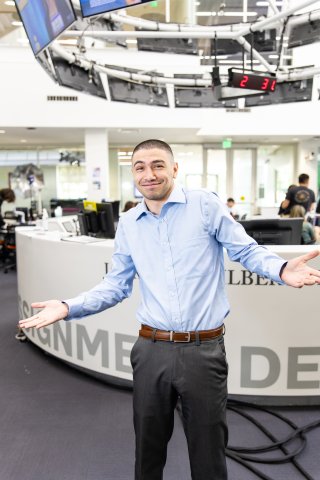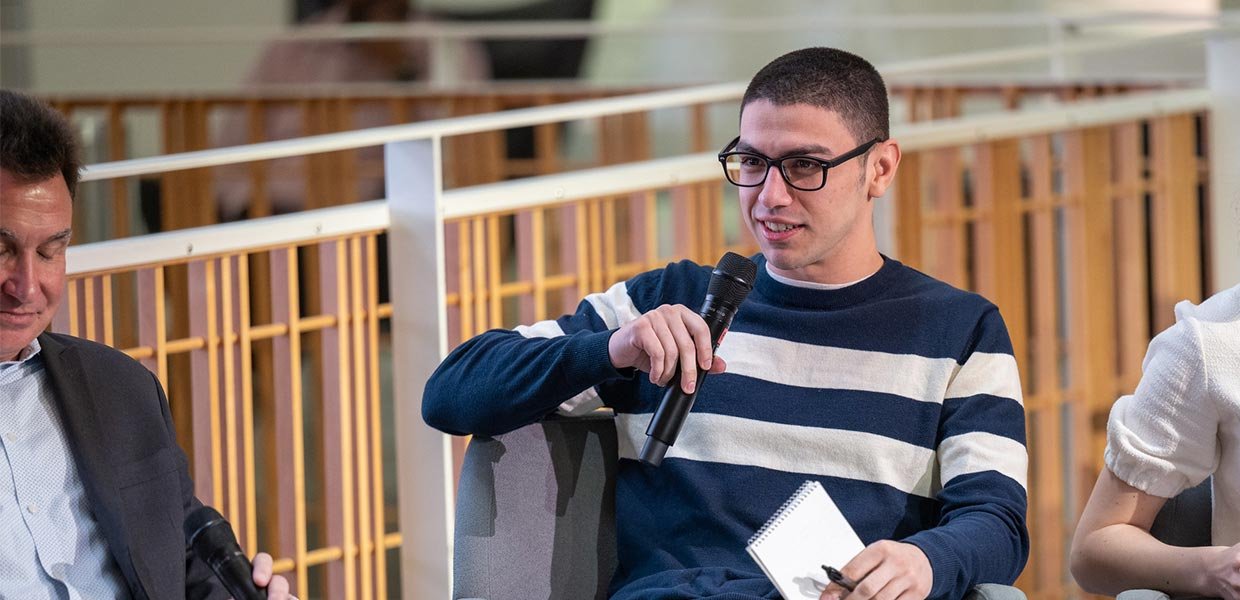Ray Troncoso was a working journalist in Jacksonville, Florida, who had previously earned notice for his reporting about major shifts in Illinois state policy. He certainly experienced satisfaction helping to hold policymakers accountable and to elucidate the sometimes-arcane details that held major implications for people’s lives. Yet Troncoso wished he had more time to focus on deeper investigative reporting.
A colleague and USC Annenberg alumna had some life-altering advice.
“She told me the faculty and resources at USC are incredible,” Troncoso said. “She said, ‘If you want to make this change from daily reporting, accountability stuff, to long-form investigative stories, going there will give you the credibility to do that.’”
When he applied, he never expected to field a call from two-time Pulitzer Prize winner Mark Schoofs, associate professor of journalism at USC Annenberg. Impressed by Troncoso’s submission, Schoofs reached out with words of encouragement.
“He said he thought I showed a lot of promise,” Troncoso said, “and that he’d like to help me take the next step in my career.”
In the Master of Arts in Specialized Journalism program, Troncoso benefited from Schoofs’ guidance as well as opportunities both to train in emerging reporting techniques and to build up samples that show off his investigative chops. Looking forward to commencement with promising prospects, he sees his USC Annenberg education as a turning point in his professional life.
“The mentorship I’ve gotten from Mark Schoofs has been invaluable,” he said. “It has really changed the entire trajectory of my career. I can’t imagine getting any of the opportunities that I currently have if he hadn’t asked me about coming to USC.”

The first step after graduating will be an open-source intelligence internship as part of Reuters’ data and investigative teams. The method, called “OSINT” for short, brings the fundamentals of journalism firmly into the digital age by drawing on online resources such as public databases, Google Maps satellite imagery, domain registration records and information shared on social media.
OSINT had an early moment in the spotlight during the Syrian civil war when Twitter users wielded it to scoop mainstream news outlets in uncovering details of the conflict. Increasingly, major media agencies are convening their own OSINT teams. Troncoso gained key skills to work in that space through USC Annenberg’s newly launched OSINT lab.
“I got to be on the ground floor of testing out how those classes would look,” he said. “I learned new techniques that helped me secure the Reuters fellowship. A lot of OSINT stuff is considered cutting-edge right now, but very soon it might just be the standard of what’s expected of you as a journalist. So I’m glad that I was able to come here and be ahead of the curve.”
His role as managing editor at the USC Annenberg Media Center gave him a fresh perspective on journalism, driving him to home in rigorously on how a given story serves its audience. Troncoso also found that he learned by helping others with their reporting. From his colleagues at the Media Center to his classmates, Troncoso has come away wowed by his fellow students.
“I’m thankful to have worked alongside so many great journalists at USC,” he said. “My master’s cohort has been really amazing. There are people from very diverse backgrounds, different economic statuses, people who’ve come from other countries who have very different life experiences.”
In his previous position with the nonprofit news service Capitol News Illinois, Troncoso called upon a knack for distilling complicated topics into digestible explanations, something he’d cultivated as an undergraduate at the University of Florida. Report for America, a national service program that places emerging journalists into local newsrooms, connected him with the news service to focus on issues that impact the traditionally underserved, such as Black, indigenous, Latino and rural communities. He followed an agenda set forth by the Illinois Legislative Black Caucus in 2020 from initial hearings to the passing of an omnibus bill that included the end of cash bail.
Troncoso’s breakdown of that legislation ended up being carried by newspapers and NPR stations statewide.
“My reporting was basically everywhere,” he said. “Being there at just the right moment to be one of the main people covering what felt like earth-shattering political change in Illinois was an amazing experience.”
Troncoso credits the work ethic exemplified by his parents for his dedication to sifting through 300-page laws, assiduously countering misinformation, and — in his shift to investigative journalism — poring over reams of information that might not even make it into a story.
The youngest of four children, he watched as his Air Force veteran father worked multiple jobs in addition to being a mechanic, before rising through the ranks as a firefighter to become a deputy fire chief. Troncoso grew up in Miramar, Florida, but his parents arranged for him to attend school in another district with a better educational reputation, where his mother was a teacher.
“My mother just did incredible things to raise a family,” he said. “My older brothers saw the financial struggle my parents went through but I never dealt with that because my mom worked so hard while raising four kids.”
Troncoso also draws a line between his family’s hardworking ethos, his work in journalism and another longtime passion of his. He began wrestling in middle school, continuing in high school on into college, and even coaching wrestling for a stint before Report for America. Today, he finds an outlet practicing jiu jitsu and mixed martial arts.
“Training can be grueling,” he said. “It helps with reporting though. Nothing really scares me, and investigative journalism can be a lot like training; it’s not glamorous when you’re doing it, but you just put your nose to the grindstone and keep working until you get something beautiful on the other side.”
Embarking on the new chapter in his career, Troncoso will lean on his own dedication to putting in the work — and the lessons he learned on campus.
“The path was winding, but I’m so happy,” he said. “USC Annenberg got me to where I wanted to be.”
